Torque DefinitionTorque measures the force that causes an object to rotate around an axis or pivot point. It is a vector quantity expressed in Newton meters (Nm) or pound-feet (lb-ft). Torque can be described as the twisting force applied to an object, which causes the object to rotate or change its angular Velocity. The magnitude of the Torque is proportional to the force applied and the distance from the axis of rotation. In physics, Torque plays a crucial role in understanding the behavior of rotating systems, such as gears, engines, and motors, and calculating the stability and motion of objects subject to rotational forces. 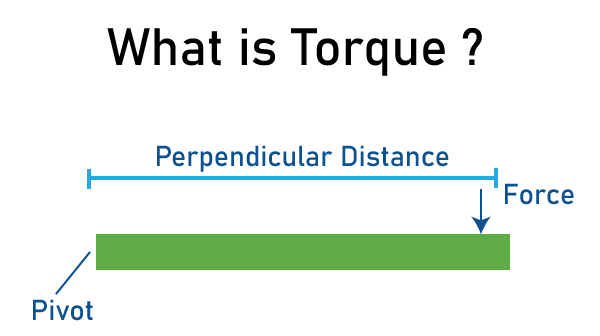
The definition of Torque in physics is the cross product of the force itself and the distance from the axis of rotation to the place where the force is applied. The formula for this relationship is T = r x F, where r is the distance from the rotation axis to the force's application point, F is the force, and the Torque. Given that it accounts for both the force's magnitude and the distance from the axis of rotation to the point where it is applied, the Newton meter is a good unit for quantifying Torque. The torque unit calculates the ability of a force to rotate an item by multiplying these two values. Other torque measurements besides the Newton meter, such as the pound-foot (lb-ft) and the dyne centimeter, are occasionally employed (dy cm). Often used in particular fields or applications where they are more suitable, these units are not a part of the SI system. Here Are Some More Details About TorqueThe Direction of TorqueTorque has both magnitude and direction. The direction of the Torque is perpendicular to the plane defined by the position vector of the point of application of the force and the force vector. Units of TorqueThe SI unit of Torque is Newton-meters (Nm), commonly used in physics and engineering. Other units of Torque include kilogram-meters (kgm), foot-pounds (ft-lb), and pound-inches (lb-in). Torque measures the force that propels an object around an axis. The Newton meter (Nm), a unit of force multiplied by distance, is the common unit of Torque in the International System of Units (SI). The Newton metre (Nm), a unit of force multiplied by the distance that measures a force's ability to cause an object to rotate, is the standard unit of Torque in the International System of Units. 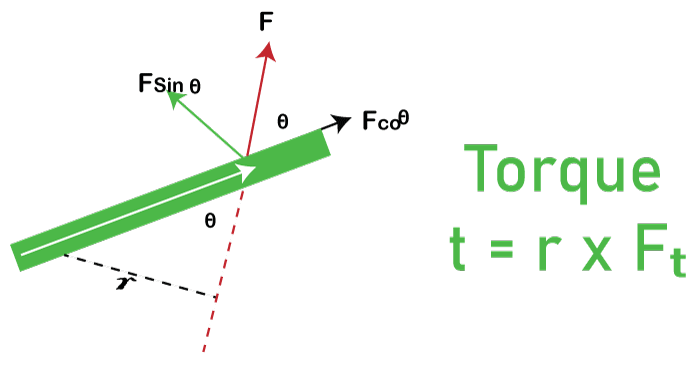
Calculation of TorqueTorque can be calculated using the following formula: τ = r x F Other Relationships with TorqueTorque and Angular MomentumTorque and angular momentum are related, and a change in torque results in a change in angular momentum. The equation gives the relationship between Torque and angular momentum: τ = dL/dt Where τ is the Torque, L is the angular momentum, and t is time. Torque and WorkTorque and work are related, as Torque is required to perform work on an object. The equation gives the work done by Torque: W = τ x θ Where W is the work done, τ is the Torque, and θ is the angle through which the object rotates. Torque and PowerTorque and power are also related, as power is the rate at which work is done. The equation gives the power generated by the Torque: P = τ x ω P is the power, τ is the Torque, and ω is the angular Velocity. The following equation captures the relationship between power and Torque: Torque x Angular Velocity equals power. Where angular Velocity, expressed in radians per second, is the rate of rotation of the object. This equation demonstrates how a machine's power output is inversely related to its torque output and rotational speed. In other words, a machine that produces more Torque and rotates faster would generate more power. In contrast, energy is the capacity to perform tasks and is expressed in joules (J) or calories (cal). One way to compute energy is to multiply the force by the distance it is applied over or to multiply power by time. This implies that a machine's energy output depends on its torque output, its speed, and the duration of its operation. On the other hand, the pace at which energy is transformed or transported is known as power, and it is the amount of work completed in a given time and is expressed in energy-per-time measures like watts (W) or horsepower (hp). A machine's power output is influenced by the Torque it generates and the rotational speed. Static TorqueStatic Torque is required to bring an object from rest to a constant angular velocity. Dynamic TorqueDynamic Torque is the Torque that is required to maintain a constant angular velocity. It is proportional to the angular Velocity and is expressed in Newton meters (Nm) or pound-feet (lb-ft). 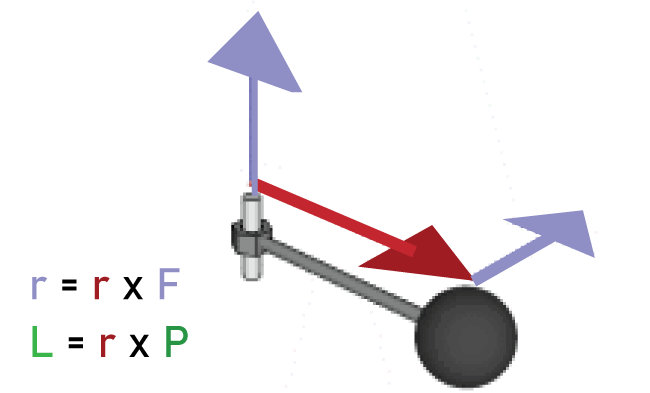
Static EquilibriumPhysics, engineering, and architecture are just a few disciplines where static equilibrium is crucial. It is used to design and develop structures and machines for optimum performance and safety and to examine the stability of those objects. As a result, the sum of the torques about each axis and the sum of the forces acting in each direction must be zero. For instance, if a book is resting on a table, the normal force of the table pushing up on the book balances the force of gravity pulling on the book. The Torque produced by the gravitational force pressing on the book would become unbalanced if it were to begin to tilt, which would cause the book to begin rotating. Both net force and Torque are important ideas in physics, although they affect an object in quite different ways. An object will be at rest or travelling at a constant speed if the net force acting on it is zero. While Torque measures the rotational force imparted to an item, the former is not. The product of the applied force and the distance from the axis of rotation is used to compute Torque. An object will not rotate if there is no torque applied to it. The object will undergo rotational acceleration and rotate in the direction of the Torque if the Torque is not zero. 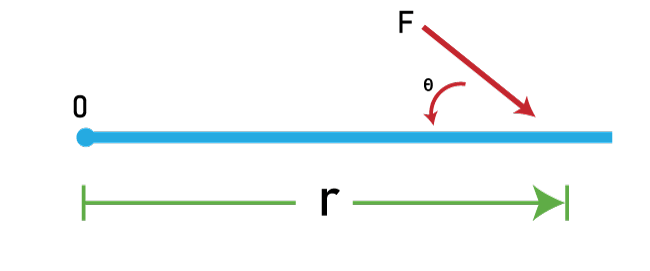
Dynamic EquilibriumAn object is said to be in dynamic equilibrium if the net Torque acting on it is zero and its angular Velocity remains constant. This means that the object is rotating at a constant rate, not accelerating or decelerating. In summary, Torque is a measure of the force that causes an object to rotate and is an important concept in various fields, including mechanics, engineering, and physics. Right-Hand RuleTorque can be determined using the right-hand rule, which states that if the thumb of the right-hand points in the direction of the force and the fingers of the right hand are curled in the direction of the rotation, then the thumb will point in the direction of the Torque. Importance of Torque in Various FieldsTorque is important in various fields, including mechanics, engineering, and physics. In physics, Torque is used to study the stability and motion of objects, such as satellites and planets, that are subject to rotational forces. In mechanics, Torque calculates the rotational motion of objects, such as gears, engines, and motors. In engineering, Torque designs and analyses rotating systems, such as turbines, generators, and electric motors. 1. Torque in Vehicle Engineering Torque is an important concept in vehicle engineering, as it determines the ability of an engine or motor to accelerate a vehicle. The Torque of a machine or motor is usually specified at a certain speed and is used to compare the performance of different engines and motors. 2. Torque in Robotics Torque is also important in robotics, as it controls the movement and position of robotic joints. Robotic systems often use torque sensors to measure the Torque at each joint and use this information to control the robot's motion. HistorySince the time of the ancient Greeks, the idea of Torque, or rotational force, has a long and rich history. Archimedes of Syracuse, who lived in the third century BCE, is credited with introducing the concept of Torque as a physical quantity. The work of Archimedes, who made numerous contributions to mathematics and physics, served as the starting point for studying Torque. One of Archimedes' most notable discoveries was the concept of buoyancy, which asserts that an item submerged in a fluid exerts an upward force equal to the weight of the fluid it displaces. Archimedes demonstrated that the Torque needed to raise an object is proportional to the weight of the object and the distance from the axis of rotation by using this principle to analyze the behavior of objects spinning about a fixed axis. Hipparchus was a Greek mathematician who made significant contributions to the science of astronomy in the second century BCE. He employed the idea of Torque to describe the motions of celestial bodies. The concept of Torque developed further over the following centuries as mathematicians and scientists improved their knowledge of rotational motion and produced new scientific discoveries. Islamic philosophers like Al-Biruni and Al-Haytham, who contributed significantly to mathematics and optics, researched the Torque during the Middle Ages. Around this time, the idea of Torque was also used to analyze machinery, and engineers started to employ Torque to develop more effective and efficient machines. The French mathematician and astronomer Pierre-Simon Laplace created a mathematical theory of Torque that was later applied to investigate the behavior of rotating objects in engineering and physics. The German mathematician and astronomer Johannes Kepler utilized the Torque to describe the motion of the planets. The advent of the steam engine and other industrial machinery in the 19th century sparked an increase in interest in the study of Torque. To develop and optimize the performance of these machines, engineers and scientists started to use Torque, which led to the notion of Torque being a crucial instrument in mechanical engineering. The study of Torque developed during the 20th century as researchers discovered new findings and applied the theory to new fields of inquiry. For instance, the advancement of electrical and electronic engineering allowed for novel torque measurement and control methods, which led to the establishment of the discipline of control engineering. Today, the study of Torque is a multidisciplinary subject that includes elements of physics, engineering, computer science, and mathematics. Applications for Torque are numerous, ranging from the design of machinery and vehicles to the management of robotic systems and biomechanics research. 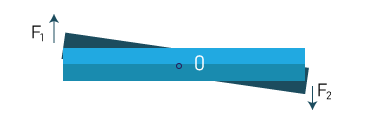
The design of engines and other types of machinery is one of the primary uses of Torque. Engineers employ Torque to improve these machines' efficiency and ensure they can produce enough power to handle the demands of the applications for which they are designed. The discipline of control engineering is one more significant area where Torque is used. Torque is a tool control engineers use to regulate the motion of robots, machines, and other automated systems and to ensure that these systems carry out their intended activities precisely and under control. ConclusionIn conclusion, the Torque has a long and fascinating history that dates back to the ancient Greeks, more than 2,000 years ago. A wide range of scientists and engineers have improved and enhanced the idea of Torque throughout the years. It is still a crucial instrument in investigating and regulating rotational motion today. In other words, no net force or Torque is operating on the item. This indicates that no imbalanced pressures or torques are acting on the object that could cause it to move or rotate. The main distinction between net force and Torque is that the former influences an object's translational motion while the latter influences its rotating motion. A door will move in the direction of the force, for instance, if you push it with a net force. The door will rotate around its hinges if you impart Torque to it by pushing on it at an angle. When a force is applied far from an axis of rotation, a rotating force known as Torque is created. Machines frequently use Torque to transport power from one component to another or generate rotational motion. The Torque produced by a machine or mechanical system, such as an engine, motor, or gearbox, is referred to as machine torque. The amount of Torque generated by a machine is influenced by several variables, such as the force exerted, the distance from the axis of rotation, and the machine's efficiency and design. Machines with more Torque can generate more rotational force, which can be used to complete more work. Various kinds of machines produce Torque, each with special qualities and uses. For instance, although gearboxes and transmissions employ gears to transfer Torque from one component to another, engines and motors typically generate rotational force using combustion or electrical energy. Understanding the connections between the related physics and engineering concepts of Torque, power, and energy can be useful for assessing how well machines and mechanical systems work. When a force is applied far from an axis of rotation, a rotating force known as Torque is created. It is expressed as a product of force and length, such as Newton meters (N-m) or pound-feet (lb-ft). A machine's capacity to spin an object or carry out work depends on how much Torque it produces. Numerous applications, ranging from motors and engines to wind turbines and generators, demonstrate the link between Torque, power, and energy. Engineers and designers can maximize the performance and efficiency of these machines and systems and ensure they perform to their maximum potential by understanding the principles of Torque, power, and energy principles.
Next TopicUniform Motion Definition
|
 For Videos Join Our Youtube Channel: Join Now
For Videos Join Our Youtube Channel: Join Now
Feedback
- Send your Feedback to [email protected]
Help Others, Please Share










